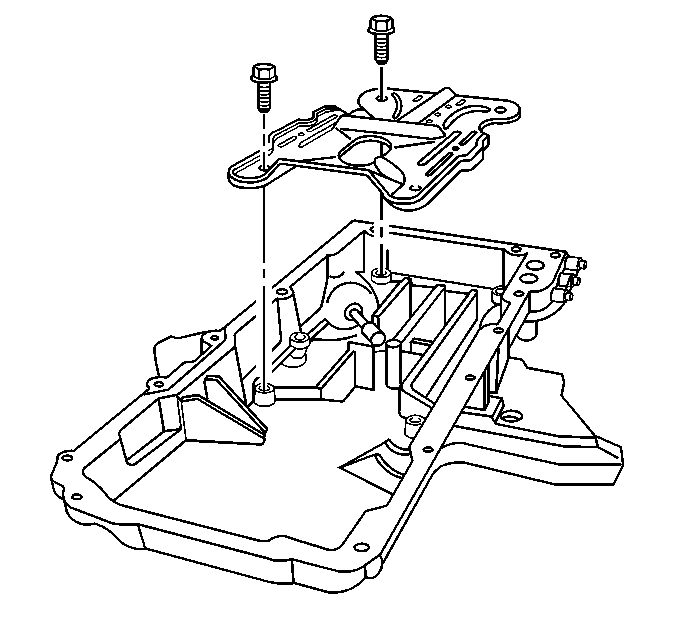For 1990-2009 cars only
Important:
• Do not reuse the oil pan cover gasket. Install a NEW cover gasket
during assembly. • Do not reuse the oil pan to engine block gasket. Install a NEW
gasket during assembly. • When installing a NEW oil pan gasket, it is not necessary to install
the rivets that retain the NEW gasket to the pan.
- Remove the oil level sensor from the pan.
- Remove the oil temperature sensor, oil pan cover, gasket, and bolts.
- Remove the oil pan drain plug and O-ring seal.
- Drill (3) out the oil pan gasket retaining rivets (2) (if required).
- Remove the oil pan gasket (1).
- Remove the oil pan baffle bolts and baffle.
- Clean the oil pan in solvent. Be sure to thoroughly clean all of the oil passages and recesses of the pan.
- Clean the oil pan gasket surfaces.
- Dry the oil pan with compressed air.
- Inspect the gasket sealing surfaces for excessive scratches or gouging.
- Inspect the oil pan oil level sensor seal surface damage.
- Inspect the oil pan core plugs for looseness.
- Inspect the oil pan drain plug and threaded drain hole for damaged threads.
- Inspect the oil filter sealing surface for scratches or gouging.
- Inspect the oil filter fitting for a loose fit or damaged threads.
- Inspect the oil passages for restrictions.
- Inspect the O-ring seal of the oil level sensor cuts or damage. If the O-ring seal is not damaged, the O-ring may be used during assembly.
- Inspect the oil filter bypass valve for proper operation.





Refer to Replacing Engine Gaskets .
Caution: Wear safety glasses in order to avoid eye damage.
Refer to Replacing Engine Gaskets .


The drain plug O-ring seal may be reused if not cut or damaged.

Lightly push the bypass valve into the bore. The valve spring should reseat the valve to the proper position.
